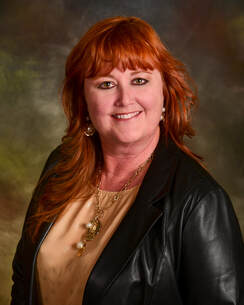






Based on the Technology Categories for Purposeful Instruction, the ISTE Educator and Student Standards, and research based instructional practices, attendees will "Make the Move".
*Know about best practice models, digital tools, and resources in educational technology.
*Understand how to apply the Technology Categories for Purposeful Instruction and theie own instructional strategies.
*Make Connections between the resources, categories, and moves by exploring scenarios in teaching and learning.
*Transform the learning by moving through the templates to "learn the move", "put groove in the move", and "get moving".
Coaches, teachers, or professional developers will appreciate the templates and resources provided to help teachers transform teaching and learning.
We will outline a template to “make the move,” integrating tech into F2F and remote instruction. Using protocols found in our upcoming co-publication between Solution Tree & ISTE, we will take participants through several scenarios and activities to scale up digital age teaching and learning. Examples include protocols like “Jigsaw,” “I See, I Think, I Wonder” and “Six Word Stories,” where participants will use our template for integrating best practices and technology into instruction.
Welcome & Introductions - 15 mins
Interactive Inclusion Activity
Learn the Move - 20-30 mins
What is a Move? (brief introduction of Hattie's 256, Marzano 9, Kagan's Cooperative Learning, and visible thinking routines.
Elements of the Move template
The impact of the post-pandemic shift
Why teachers need to transform teaching and learning with tech-embedded best practices
What does a Move look like at the no-tech, low tech, tech embedded levels
Introducing the protocols
LEARN - Hands-On Audience Activity - 10 mins
Putting Groove in the Move - 20-30 mins
How are we framing the Technology Categories for Purposeful Instruction? (introducing the 9 categories)
What does it look like to "Put Groove in the Move" using ed tech models (e.g. SAMR, TPACK, Triple E, TIM, PICRAT, etc.) and freely available tools (sample digital tools and 21things4educator connections)?
What does it look like when we integrate the Standards (SCENARIOS sharing ISTE Educator and Student standards and no-tech, low tech, and tech-embedded)
GROOVE - Hands-On Audience Activity - 10 mins
Soup to Nuts - Sample Moves - 20-30 mins
Explore sample protocols (I See/I Think/I Wonder, Six Word Story, Jigsaw, or etc.) with scenarios - Soup to Nuts
SCENARIOS - Hands-On Audience Activity - 10 mins
Make Your Move - 20 mins
Using the protocol, participants will conplete the protocol to to apply technology to a strategy
MOVE - Hands-On Audience Activity 20 Mins
SHARE - Digital Gallery Walk 15 mins
2.5 - 3 hours
Crompton, H. (2017). ISTE standards for educators: A guide for teachers and other professionals. International Society for Technology in Education.
Dean, C. B., & Hubbell, E. R. (2012). Classroom instruction that works: Research-based strategies for increasing student achievement. Ascd.
Hattie, J. (2008). Visible learning: A synthesis of over 800 meta-analyses relating to achievement. Routledge.
Kagan, S. (1989). The structural approach to cooperative learning. Educational leadership, 47(4), 12-15.
Marzano, R. J., Pickering, D., & Pollock, J. E. (2001). Classroom instruction that works: Research-based strategies for increasing student achievement. Ascd.
Ritchhart, R., Church, M., & Morrison, K. (2011). Making thinking visible: How to promote engagement, understanding, and independence for all learners. John Wiley & Sons.